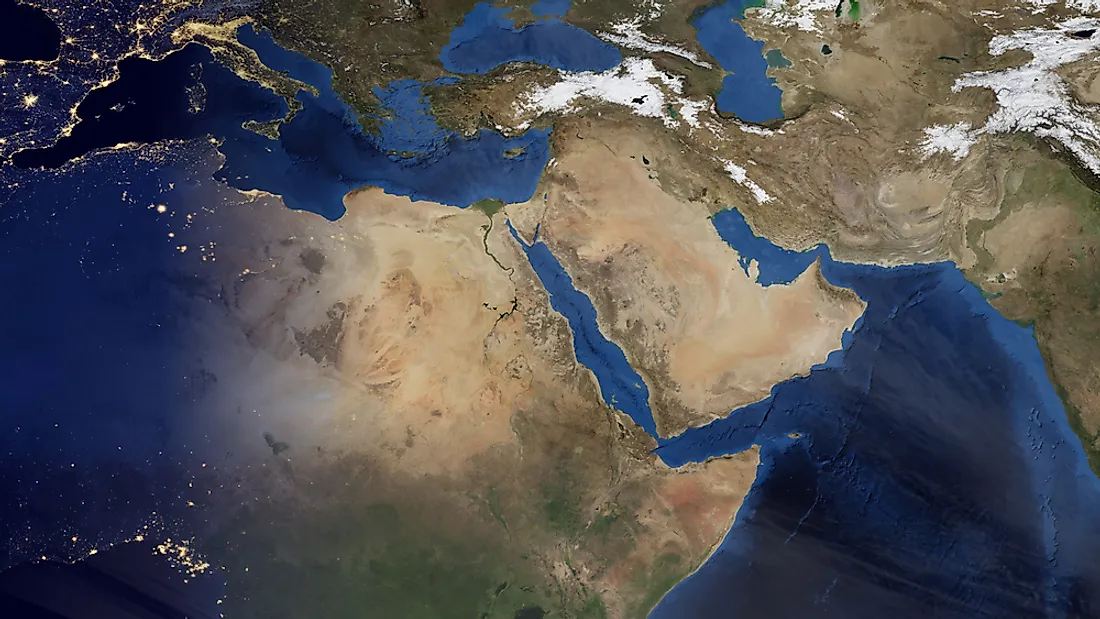Why is it Called the Middle East?

Why is it Called the Middle East?
The term "Middle East" originated from the same European perspective that described Eastern Asia as "the Far East." The Middle East denotes the transcontinental area between Western Asia and Egypt. It is comprised of 17 nations and an estimated population of 371 million. Some of the area's largest cities include Riyadh, Cairo, and Istanbul.
Background
The origin of the term "Middle East" is considered to be in the British India Office during the 1850s. It was popularized by Alfred Thayer Mahan, an American naval strategist who was referring to the region between Arabia and India in 1902. Mahan’s definition of the Middle East was the area around the Persian Gulf. Sir Ignatius Valentine Chirol further enlarged this definition to cater for the Asian regions whose territories extended to India.
Prior to the Second World War, another term, the "Near East", denoted the eastern shores of the Mediterranean in addition to regions centered around Turkey. Middle East was used by the British while naming its command in Egypt in the late 1930s. It was after this usage that the term became widely used in the West. In 1946, the Middle East Institute began operating in Washington, D.C., the capital of the United States.
History of the Region
The area now designated as the Middle East was known as the Near East in medieval times. It is reputed as the cradle of civilization as it was home to some of the most ancient human developments. Such civilizations include those of Mesopotamia, ancient Egypt, Hittite, Greek, the Levant, Persia, and the Arabian Peninsula. Ancient Near East was governed by multiple empires starting with the Neo-Assyrian Empire, Achaemenid, Macedonian, Iranian, Roman, and Byzantine Empires. The Islamic Caliphate began their Arab conquest of the area in the 7th century. The Ottoman Empire, which had established control in the region, was defeated by the British after First World War. The French and the British divided power in the Middle East after carrying out their partition and thus defining some of the geographic boundaries still used today. By the late 1960s, nations of the Middle East had attained independence and were seeking an identity in the global landscape. The region has achieved economic significance due to the presence of oil reserves.
Countries of the Middle East
Countries classified as being part of this region are Iraq, Iran, Cyprus, Oman, Egypt, Bahrain, Turkey, United Arab Emirates, Qatar, Palestine, Yemen, Saudi Arabia, Lebanon, Israel, Syria, Kuwait, and Jordan. Some countries are occasionally added in the definition such as Azerbaijan, Georgia, and Armenia. Other nations are quoted in the affairs of the Middle East such as Pakistan, Afghanistan, Morocco, Tunisia, and Algeria.
Ethnicity, Language, and Religion
The majority of the region’s population identify as Arabian, while the rest include Turkic, Arameans, Persians, Kurds, Berbers, Shabaks, Zazas, Assyrians, and Samaritans. Numerous dialects of the Arabic Language are widely spoken in the Middle East. Literary Arabic serves as the official language in most states in the area. Other languages also spoken are Persian, Turkish, Hebrew, Kurdish, Armenian, Greek, and English. Some of the world’s major religions including Islam, Christianity, and Judaism have their roots in the Middle East. These religions have many adherents in the Middle East even in modern day. Other religions practiced in the area are Yazidism, Bahá'I Faith, Shabakism, and Mandaeism.











